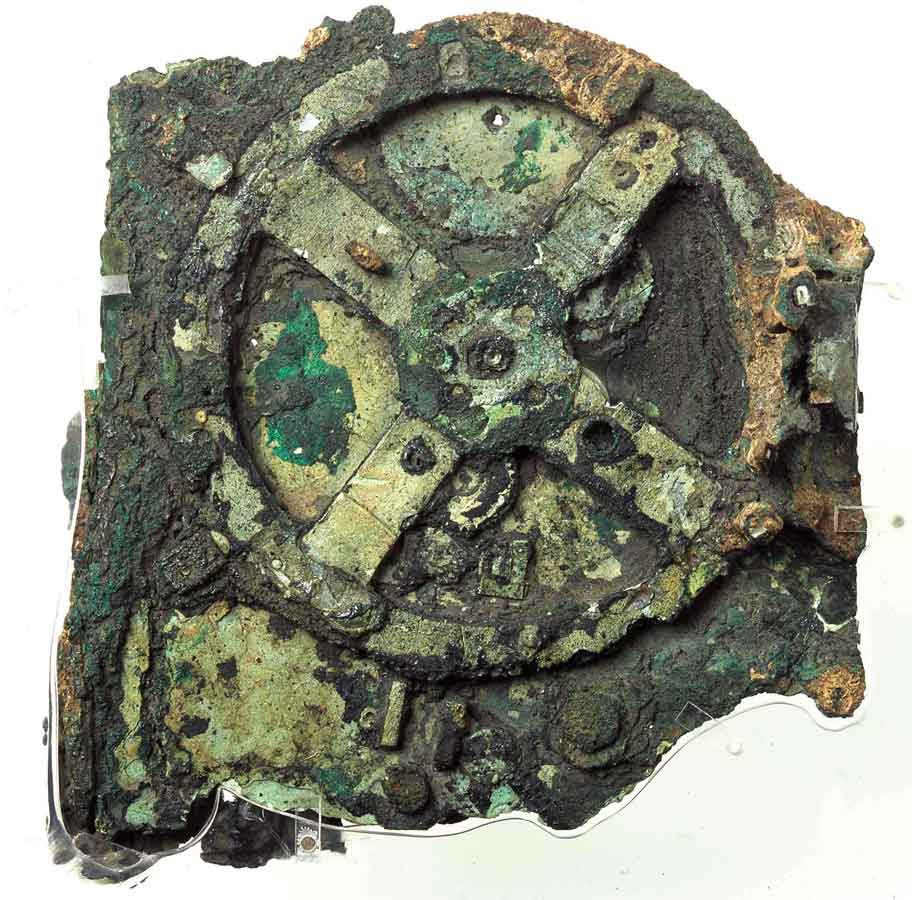From April 5, 2012 to January 12, 2014, the exhibition “The Antikythera Shipwreck: the Ship, the Treasures, the Mechanism” runs at the National Archaeological Museum in Athens, Greece.
Exhibition Sections
The Antikythera Shipwreck has turned out to be an object of interdisciplinary research. Its finds date from the fourth to the first century BC. Its cargo attests to the existence of trade in art, then new in the western world. The ongoing study of the Mechanism continues to offer surprises to experts in ancient technology and astronomy.
The 378 exhibits are presented in sections, which pose, or answer, questions.
1st Section: The adventure of recovery: The birth of underwater archaeology
The first section of the exhibition presents the account of the attempts to recover the shipwreck, of the ensuing restorations, press releases and state documents from all the periods involved.
2nd Section: The ship, its capacity and its crew
Fragments from the hull of the ship and its external lead sheathing with various other accessories, such as tubes for water drainage, sounding weights for determining the depth of water and the topography of the sea-bottom, are displayed in this section. The remains of the ship and its cargo show that the vessel was a freighter (in ancient Greek ὀλκὰς (‘olkas’), in Latin navis oneraria), with estimated capacity of 300 tons. Objects used by the people on board (e.g. vases and games) offer a picture of the habits and life during travel.
3rd Section: The ship’s voyage and her cargo
What kind of goods was being transported by the freighter? Where did it start its journey? Where was it heading for?
The bronze and marble statues, the glassware, the bronze vessels and the golden jewellery represent only a part of the cargo, whose remainder still lies on the bottom of the sea, possibly located at deeper levels. These works bear witness to the aesthetic tastes of those who ordered them or of potential buyers but, above all, reflect the then novel practice in the history of western civilization of trading in artworks.
The study of the cargo greatly contributes to our understanding of maritime trade and the circulation of works of Greek art at the end of the Hellenistic period and the Roman Republic in the light of the commercial exchanges and the taste of the rising Roman aristocracy.
4th Section: The Mechanism
One third of the exhibition is dedicated to this exquisite, unique device of mathematical and astronomical genius, which has created worldwide interest. All 82 surviving fragments, including the three best-known large pieces, will be displayed.
The history of the interdisciplinary study of the Mechanism, drawings, radiographs, tomographies, digital assimilations and models accompanied by interpretations advanced by scholars during the past century are presented in this unit. The exhibition ends with the presentation of a short 3D documentary produced by Philippe Nicolet.
